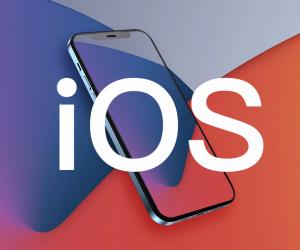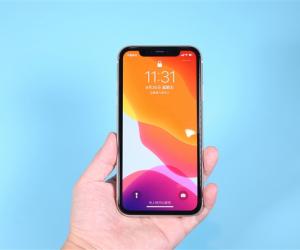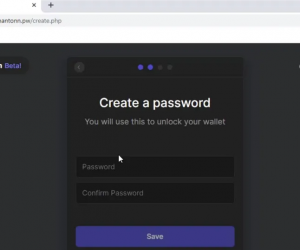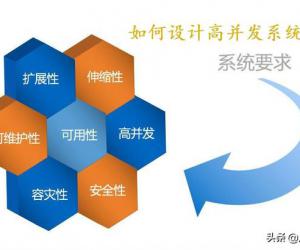Android 内存溢出解决方案(OOM) 整理总结
一般我们大家在遇到内存问题的时候常用的方式网上也有相关资料,大体如下几种:
一:在内存引用上做些处理,常用的有软引用、强化引用、弱引用
二:在内存中加载图片时直接在内存中做处理,如:边界压缩
三:动态回收内存
四:优化Dalvik虚拟机的堆内存分配
五:自定义堆内存大小
可是真的有这么简单吗,就用以上方式就能解决OOM了?不是的,继续来看...
下面小马就照着上面的次序来整理下解决的几种方式,数字序号与上面对应:
1:软引用(SoftReference)、虚引用(PhantomRefrence)、弱引用(WeakReference),这三个类是对heap中java对象的应用,通过这个三个类可以和gc做简单的交互,除了这三个以外还有一个是最常用的强引用
1.1:强引用,例如下面代码:
Object o=new Object();
Object o1=o;
上面代码中第一句是在heap堆中创建新的Object对象通过o引用这个对象,第二句是通过o建立o1到new Object()这个heap堆中的对象的引用,这两个引用都是强引用.只要存在对heap中对象的引用,gc就不会收集该对象.如果通过如下代码:
o=null;
o1=null
heap中对象有强可及对象、软可及对象、弱可及对象、虚可及对象和不可到达对象。应用的强弱顺序是强、软、弱、和虚。对于对象是属于哪种可及的对象,由他的最强的引用决定。如下:
String abc=new String(abc); //1
SoftReference abcSoftRef=new SoftReference(abc); //2
WeakReference abcWeakRef = new WeakReference(abc); //3
abc=null; //4
abcSoftRef.clear();//5
上面的代码中:
第一行在heap对中创建内容为“abc”的对象,并建立abc到该对象的强引用,该对象是强可及的。第二行和第三行分别建立对heap中对象的软引用和弱引用,此时heap中的对象仍是强可及的。第四行之后heap中对象不再是强可及的,变成软可及的。同样第五行执行之后变成弱可及的。
1.2:软引用
软引用是主要用于内存敏感的高速缓存。在jvm报告内存不足之前会清除所有的软引用,这样以来gc就有可能收集软可及的对象,可能解决内存吃紧问题,避免内存溢出。什么时候会被收集取决于gc的算法和gc运行时可用内存的大小。当gc决定要收集软引用是执行以下过程,以上面的abcSoftRef为例:
123 | 1 首先将abcSoftRef的referent设置为null,不再引用heap中的new String(abc)对象。2 将heap中的new String(abc)对象设置为可结束的(finalizable)。3 当heap中的new String(abc)对象的finalize()方法被运行而且该对象占用的内存被释放, abcSoftRef被添加到它的ReferenceQueue中。 |
注:对ReferenceQueue软引用和弱引用可以有可无,但是虚引用必须有,参见:
Reference(T paramT, ReferenceQueueparamReferenceQueue)
被 Soft Reference 指到的对象,即使没有任何 Direct Reference,也不会被清除。一直要到 JVM 内存不足且 没有 Direct Reference 时才会清除,SoftReference 是用来设计 object-cache 之用的。如此一来 SoftReference 不但可以把对象 cache 起来,也不会造成内存不足的错误 (OutOfMemoryError)。我觉得 Soft Reference 也适合拿来实作 pooling 的技巧。
A obj = new A();
Refenrence sr = new SoftReference(obj);
//引用时
if(sr!=null){
obj = sr.get();
}else{
obj = new A();
sr = new SoftReference(obj);
}
1.3:弱引用
当gc碰到弱可及对象,并释放abcWeakRef的引用,收集该对象。但是gc可能需要对此运用才能找到该弱可及对象。通过如下代码可以了明了的看出它的作用:
String abc=new String(abc);
WeakReference abcWeakRef = new WeakReference(abc);
abc=null;
System.out.println(before gc: abcWeakRef.get());
System.gc();
System.out.println(after gc: abcWeakRef.get());
运行结果:
before gc: abc
after gc: null
gc收集弱可及对象的执行过程和软可及一样,只是gc不会根据内存情况来决定是不是收集该对象。如果你希望能随时取得某对象的信息,但又不想影响此对象的垃圾收集,那么你应该用 Weak Reference 来记住此对象,而不是用一般的 reference。
A obj = new A();
12345 | WeakReference wr = new WeakReference(obj); obj = null; //等待一段时间,obj对象就会被垃圾回收 |
...
if (wr.get()==null) {
System.out.println(obj 已经被清除了 );
} else {
System.out.println(obj 尚未被清除,其信息是 obj.toString());
}
...
}
1234567 | 在此例中,透过 get() 可以取得此 Reference 的所指到的对象,如果返回值为 null 的话,代表此对象已经被清除。这类的技巧,在设计 Optimizer 或 Debugger 这类的程序时常会用到,因为这类程序需要取得某对象的信息,但是不可以 影响此对象的垃圾收集。 1.4:虚引用 就是没有的意思,建立虚引用之后通过get方法返回结果始终为null,通过源代码你会发现,虚引用通向会把引用的对象写进referent,只是get方法返回结果为null.先看一下和gc交互的过程在说一下他的作用. 1.4.1 不把referent设置为null, 直接把heap中的new String(abc)对象设置为可结束的(finalizable). 1.4.2 与软引用和弱引用不同, 先把PhantomRefrence对象添加到它的ReferenceQueue中.然后在释放虚可及的对象. |
你会发现在收集heap中的new String(abc)对象之前,你就可以做一些其他的事情.通过以下代码可以了解他的作用.
import java.lang.ref.PhantomReference;
import java.lang.ref.Reference;
import java.lang.ref.ReferenceQueue;
import java.lang.reflect.Field;
public class Test {
public static boolean isRun = true;
1 2 3 4 5 6 7 8 9101112131415161718192021222324252627282930313233 | public static void main(String[] args) throws Exception { String abc = new String(abc); System.out.println(abc.getClass() @ abc.hashCode()); final ReferenceQueue referenceQueue = new ReferenceQueue |
}
结果为
class java.lang.String@96354
gc will collect:class java.lang.String@96354 好了,关于引用就讲到这,下面看2
2:在内存中压缩小马做了下测试,对于少量不太大的图片这种方式可行,但太多而又大的图片小马用个笨的方式就是,先在内存中压缩,再用软引用避免OOM,两种方式代码如下,大家可参考下:
方式一代码如下:
@SuppressWarnings(unused)
private Bitmap copressImage(String imgPath){
File picture = new File(imgPath);
Options bitmapFactoryOptions = new BitmapFactory.Options();
//下面这个设置是将图片边界不可调节变为可调节
bitmapFactoryOptions.inJustDecodeBounds = true;
bitmapFactoryOptions.inSampleSize = 2;
int outWidth = bitmapFactoryOptions.outWidth;
int outHeight = bitmapFactoryOptions.outHeight;
bmap = BitmapFactory.decodeFile(picture.getAbsolutePath(),
bitmapFactoryOptions);
float imagew = 150;
float imageh = 150;
int yRatio = (int) Math.ceil(bitmapFactoryOptions.outHeight
/ imageh);
int xRatio = (int) Math
.ceil(bitmapFactoryOptions.outWidth / imagew);
if (yRatio > 1 || xRatio > 1) {
if (yRatio > xRatio) {
bitmapFactoryOptions.inSampleSize = yRatio;
} else {
bitmapFactoryOptions.inSampleSize = xRatio;
}
123456789 | } bitmapFactoryOptions.inJustDecodeBounds = false; bmap = BitmapFactory.decodeFile(picture.getAbsolutePath(), bitmapFactoryOptions); if(bmap != null){ //ivwCouponImage.setImageBitmap(bmap); return bmap; } return null; |
}
方式二代码如下:
package com.lvguo.scanstreet.activity;
import java.io.File;
import java.lang.ref.SoftReference;
import java.util.ArrayList;
import java.util.HashMap;
import java.util.List;
import android.app.Activity;
import android.app.AlertDialog;
import android.content.Context;
import android.content.DialogInterface;
import android.content.Intent;
import android.content.res.TypedArray;
import android.graphics.Bitmap;
import android.graphics.BitmapFactory;
import android.graphics.BitmapFactory.Options;
import android.os.Bundle;
import android.view.View;
import android.view.ViewGroup;
import android.view.WindowManager;
import android.widget.AdapterView;
import android.widget.AdapterView.OnItemLongClickListener;
import android.widget.BaseAdapter;
import android.widget.Gallery;
import android.widget.ImageView;
import android.widget.Toast;
import com.lvguo.scanstreet.R;
import com.lvguo.scanstreet.data.ApplicationData;
/**
* @Title: PhotoScanActivity.java
* @Description: 照片预览控制类
* @author XiaoMa
*/
public class PhotoScanActivity extends Activity {
private Gallery gallery ;
private List ImageList;
private List it ;
private ImageAdapter adapter ;
private String path ;
private String shopType;
private HashMap> imageCache = null;
private Bitmap bitmap = null;
private SoftReference srf = null;
1 2 3 4 5 6 7 8 9 10 11 12 13 14 15 16 17 18 19 20 21 22 23 24 25 26 27 28 29 30 31 32 33 34 35 36 37 38 39 40 41 42 43 44 45 46 47 48 49 50 51 52 53 54 55 56 57 58 59 60 61 62 63 64 65 66 67 68 69 70 71 72 73 74 75 76 77 78 79 80 81 82 83 84 85 86 87 88 89 90 91 92 93 94 95 96 97 98 99100101102103104105106107108109110111112113114115116117118119120121122123124125126127128129130131132133134135136137138139140141142143144145146147148149150151152153154155156157158159160161162163164165166167168169170171172173174175176177178179180181182183184185186187188189190191192193194195196197198 | @Override public void onCreate(Bundle savedInstanceState) { super.onCreate(savedInstanceState); getWindow().setFlags(WindowManager.LayoutParams.FLAG_FULLSCREEN, WindowManager.LayoutParams.FLAG_FULLSCREEN); setContentView(R.layout.photoscan); Intent intent = this.getIntent(); if(intent != null){ if(intent.getBundleExtra(bundle) != null){ Bundle bundle = intent.getBundleExtra(bundle); path = bundle.getString(path); shopType = bundle.getString(shopType); } } init(); } private void init(){ imageCache = new HashMap |
}
上面两种方式第一种直接使用边界压缩,第二种在使用边界压缩的情况下间接的使用了软引用来避免OOM,但大家都知道,这些函数在完成decode后,最终都是通过java层的createBitmap来完成的,需要消耗更多内存,如果图片多且大,这种方式还是会引用OOM异常的,不着急,有的是办法解决,继续看,以下方式也大有妙用的:
1. InputStream is = this.getResources().openRawResource(R.drawable.pic1);
BitmapFactory.Options options=new BitmapFactory.Options();
options.inJustDecodeBounds = false;
options.inSampleSize = 10; //width,hight设为原来的十分一
Bitmap btp =BitmapFactory.decodeStream(is,null,options);
2. if(!bmp.isRecycle() ){
bmp.recycle() //回收图片所占的内存
system.gc() //提醒系统及时回收
}
上面代码与下面代码大家可分开使用,也可有效缓解内存问题哦...吼吼...
1 2 3 4 5 6 7 8 91011 | /** 这个地方大家别搞混了,为了方便小马把两个贴一起了,使用的时候记得分开使用 * 以最省内存的方式读取本地资源的图片 */ public static Bitmap readBitMap(Context context, int resId){ BitmapFactory.Options opt = new BitmapFactory.Options(); opt.inPreferredConfig = Bitmap.Config.RGB_565; opt.inPurgeable = true; opt.inInputShareable = true; //获取资源图片 InputStream is = context.getResources().openRawResource(resId); return BitmapFactory.decodeStream(is,null,opt); |
}
3:大家可以选择在合适的地方使用以下代码动态并自行显式调用GC来回收内存:
if(bitmapObject.isRecycled()==false) //如果没有回收
bitmapObject.recycle();
4:这个就好玩了,优化Dalvik虚拟机的堆内存分配,听着很强大,来看下具体是怎么一回事
对于Android平台来说,其托管层使用的Dalvik JavaVM从目前的表现来看还有很多地方可以优化处理,比如我们在开发一些大型游戏或耗资源的应用中可能考虑手动干涉GC处理,使用 dalvik.system.VMRuntime类提供的setTargetHeapUtilization方法可以增强程序堆内存的处理效率。当然具体原理我们可以参考开源工程,这里我们仅说下使用方法: 代码如下:
private final static floatTARGET_HEAP_UTILIZATION = 0.75f;
在程序onCreate时就可以调用
VMRuntime.getRuntime().setTargetHeapUtilization(TARGET_HEAP_UTILIZATION);
即可
5:自定义我们的应用需要多大的内存,这个好暴力哇,强行设置最小内存大小,代码如下:
private final static int CWJ_HEAP_SIZE = 6* 1024* 1024 ;
//设置最小heap内存为6MB大小
VMRuntime.getRuntime().setMinimumHeapSize(CWJ_HEAP_SIZE);
说明:以上的几种方法中,可能最常用的是第二种方法,其他的几种不是很常用,如果大家有什么问题可以联系原文可能会有更多的信息。
- 01-11全球最受赞誉公司揭晓:苹果连续九年第一
- 12-09罗伯特·莫里斯:让黑客真正变黑
- 12-09谁闯入了中国网络?揭秘美国绝密黑客小组TA
- 12-09警示:iOS6 惊现“闪退”BUG
- 04-29通用智能人“通通”亮相中关村论坛
- 04-29拼多多投入45亿补贴,助力上海“五五购物节
- 04-29通义千问再开源 推出最大尺寸1100亿参数模型
- 04-29【环球视线】比亚迪交付首列出海云轨
- 04-21中国产品数字护照体系加速建设




















 粤公网安备 44060402001498号
粤公网安备 44060402001498号